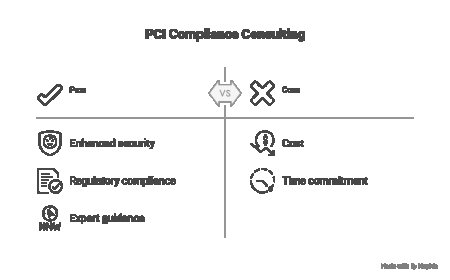How a Campus Management System Transforms Student & Staff Productivity?
Discover how a Campus Management System boosts student and staff productivity by streamlining student information management, virtual classrooms, library software, and school portals—creating smarter, faster, and more efficient campus operations.

In todays digital age, educational institutions are adopting advanced technologies to streamline administrative processes, improve learning experiences, and drive overall productivity. One such powerful tool is the Campus Management System. Whether managing student data, facilitating online learning, or automating library operations, a well-integrated CMS acts as the central nervous system of a school, college, or university.
Lets explore how a Campus Management System empowers both students and staff, enhancing productivity across the institution.
1. Centralized Student Information Management
Handling student data efficiently is critical for academic institutions. A Student Information Management System, a key module of a campus management solution, helps store, access, and manage detailed student records. This system enables staff to:
-
Quickly access student profiles, academic records, attendance, and behavioral reports.
-
Automate admission and enrollment processes, reducing paperwork and manual errors.
-
Provide students with a seamless experience from admission to graduation.
Students, on the other hand, can easily view their academic history, check their attendance, and download important documents via the School Portal, eliminating the need to visit administrative offices repeatedly. This not only saves time but also promotes transparency and accountability.
2. Enhancing Learning Through Virtual Classrooms
With the rise of digital learning, Virtual Classrooms have become a vital part of modern education. A Campus Management System seamlessly integrates virtual learning platforms, giving students and teachers a collaborative space for real-time interaction.
Teachers can conduct live classes, share assignments, host discussions, and evaluate performance from a single dashboard. Students can attend classes from anywhere, download study materials, and submit assignments on time. This flexibility allows both parties to work at their peak productivity, regardless of physical location.
Virtual Classrooms also empower teachers to personalize learning experiences, track student engagement, and provide instant feedback, making the learning process more engaging and effective.
3. Simplified Library Management
The days of manual book tracking and paper-based cataloging are over. Modern Library Management Software, integrated within the Campus Management System, simplifies how libraries operate. Staff can:
-
Automate book issuance, returns, and reservations.
-
Digitize the library catalog for easy search and access.
-
Track overdue books and manage fine collections efficiently.
For students, this system means faster book searches, instant availability updates, and easy online reservations through the School Portal. As a result, both library staff and students spend less time on administrative tasks and more time on learning and research.
4. Improved Communication Across Campus
Communication gaps can hamper productivity and lead to confusion. A Campus Management System bridges this gap by offering a unified communication platform where announcements, notifications, and event updates are instantly shared with students, staff, and parents.
Through the School Portal, stakeholders can receive real-time updates on exam schedules, fee payments, extracurricular activities, and campus events. Staff no longer need to waste time on manual notices or repetitive email chains, and students stay informed, reducing the chances of missed deadlines or opportunities.
5. Automated Administrative Processes
Administrative tasks such as fee management, timetable scheduling, attendance tracking, and examination planning often consume significant staff time. With a Campus Management System, these processes are automated:
-
Fee payment modules generate automated invoices and reminders, ensuring timely collections.
-
Attendance tracking systems reduce manual entry errors and generate reports instantly.
-
Exam management tools help plan schedules, assign invigilators, and publish results effortlessly.
By automating these workflows, staff can focus more on strategic roles and academic planning rather than getting bogged down by routine tasks.
6. Easy Access Through the School Portal
The School Portal serves as the single point of access for students, teachers, and parents. From academic calendars to class schedules and progress reports, everything is available at their fingertips.
Students can:
-
Access their learning materials and resources.
-
Track attendance and performance.
-
Register for courses and activities.
Staff can:
-
Monitor student progress in real-time.
-
Collaborate with colleagues.
-
Plan and execute academic strategies efficiently.
Parents also benefit from the portal by staying updated on their childs academic journey without the need to schedule frequent school visits.
7. Data-Driven Decision Making
Modern Campus Management Systems come equipped with analytics and reporting tools. With the help of data insights, management teams can:
-
Identify trends in student performance and attendance.
-
Analyze the effectiveness of teaching methods.
-
Make informed decisions about resource allocation.
These insights empower leaders to create policies and programs that foster student success and operational efficiency, enhancing the overall productivity of the institution.
8. Boosting Collaboration and Engagement
Finally, a Campus Management System encourages collaboration among various stakeholdersstudents, teachers, administrators, and parents. Discussion boards, virtual classrooms, and chat features create a connected campus environment where ideas flow freely, and collaboration thrives.
Increased collaboration leads to enhanced productivity as tasks are streamlined, bottlenecks are reduced, and stakeholders are aligned toward common educational goals.
Final Thoughts
A Campus Management System is no longer a luxuryit is a necessity for modern educational institutions aiming to streamline operations and improve outcomes. By integrating essential modules like the Student Information Management System, Virtual Classroom, Library Management Software, and the School Portal, schools and colleges can transform how they operate daily.
For students, this means a smoother learning journey with fewer administrative hurdles. For staff, its an opportunity to focus on what truly matterseducation and student success. The result is a highly productive, digitally empowered campus that thrives in the 21st-century education landscape.
If your institution hasnt yet adopted a Campus Management System, now is the time to take the leap and embrace a smarter, more productive future.



































